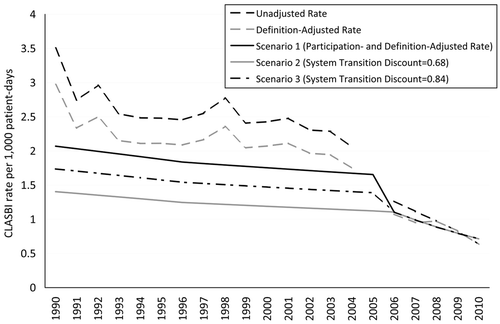Over the past 20 years, hospitals have gradually implemented many safety improvements to reduce the number of hospital-onset central line associated blood stream infections (CLABSIs). In the June 2013 issue of Infection Control and Hospital Epidemiology, Matthew Wise & colleagues at the CDC give national estimates in critical care patients over the past two decades. The good news:
Total effect of these safety efforts: from 104,000 to 198,000 CLABSIs were prevented over the 20 years. The job isn’t done, as about 15,000 still occur each year, but this is substantial progress. This is valuable for several reasons:
- Patients don’t suffer from unnecessary life-threatening infections.
- Everyone saves money.
- Patients don’t need powerful antibiotics to fight these infections, antibiotics that often trigger other unintended consequences, such as resistance. New antibiotic drugs are valuable, but avoiding infection is the best way to avoid resistance.
- This is strong evidence that quality initiatives can reap real results over many years.
- Most of the remaining 15,000 annual CLABSIs are clustered in medium and large teaching hospitals, suggesting more focused ongoing quality efforts.
One final point: this is exactly the type of surveillance and research that the CDC excels at. We need more funds here, not fewer.
Previous TIE posts on antibiotics.
@koutterson


